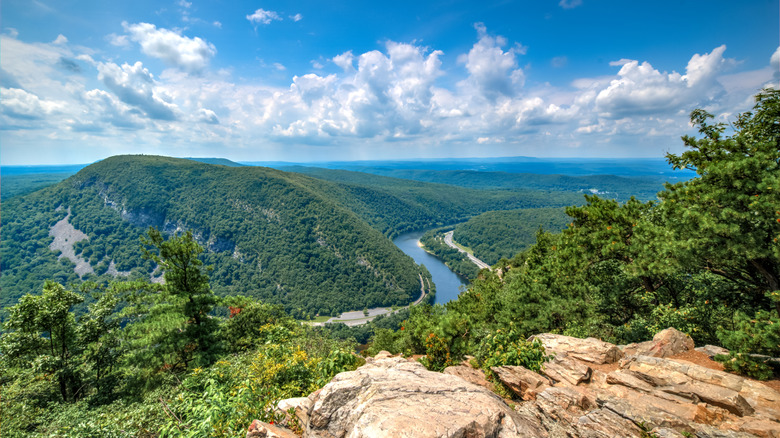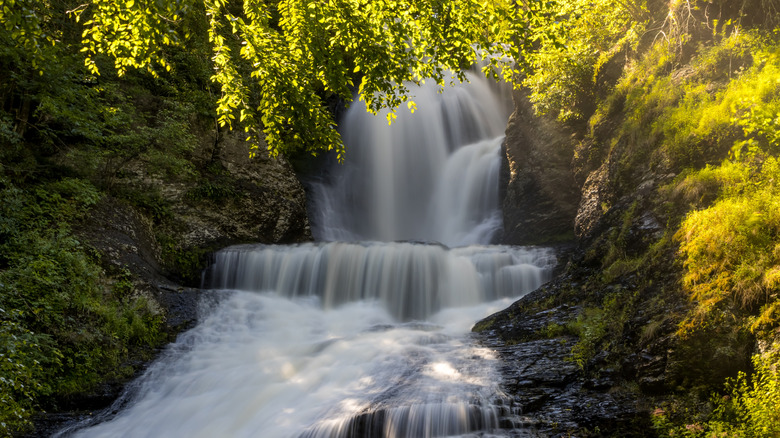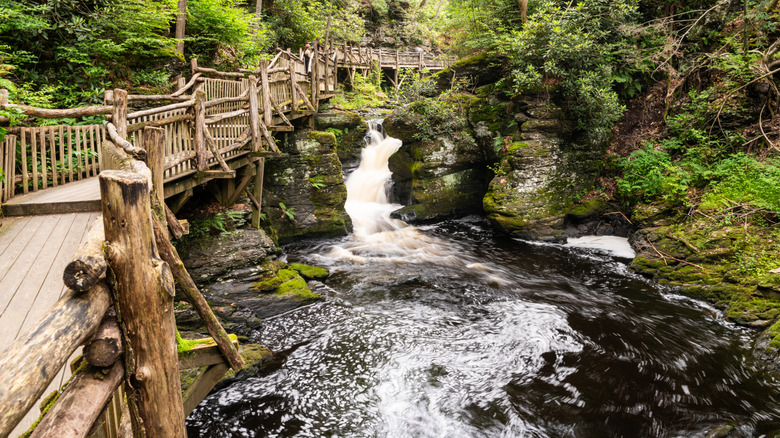A National Recreation Area In New Jersey And Pennsylvania Boasts Breathtaking River Views
It may come as a surprise that a gorgeous and wild recreation area lies within the most densely populated region of the United States, providing refuge from urban sprawl. The Delaware Water Gap National Recreation Area is situated on the border between Pennsylvania and New Jersey, covering nearly 70,000 acres including a mile-long stretch of the Delaware River. This recreation area offers breathtaking views, mountain vistas, pristine waterfalls, and historical artifacts all waiting for you to explore.
When you're ready to escape the overstimulation of urban life, head just one hour northeast of Allentown, Pennsylvania or one hour west of Newark, New Jersey, to find yourself amongst the sycamores and pines of the Delaware Water Gap. A place teeming with wildlife like soaring eagles, clumsy black bears, sly foxes, and elusive bobcats. Where time stands still in the many historical structures and villages within the park, and where you can visit both the tallest waterfall in New Jersey and the tallest waterfall in Pennsylvania on the same day. Add this to your Pennsylvania road trip, or make the trip for this recreation area alone, there is plenty to see and do.
What to do in the Delaware Water Gap National Recreation Area
Spend some time picnicking at Kittatinny Point, a riverside spot at the base of the highest mountains in New Jersey. Or wander one of the many hiking routes, like the popular Mt. Tammany Trail, which leads you through 1.2 miles to incredible vistas. Several trails lead to the area's many waterfalls, including Raymondskill Falls, the tallest in Pennsylvania. It's just a short 0.3-mile walk to this beautiful three-tiered, pristine cascade. Alternatively, you can head to the other side of the river and hike to Buttermilk Falls, the tallest in New Jersey. The hike is just under 3 miles round trip but quite strenuous, with over 1,000 feet of elevation gain.
The area also provides insight into the lives of early settlers, with old villages and historical buildings scattered throughout. Take a walk or drive along the nearly 400-year-old Old Mine Road or visit the re-creation of the 1870s agricultural village of Millbrook, which features 19 distinct buildings, including barns, homes, and workshops. During the summer months (on select weekends), some of these buildings are open to the public, where you can learn a bit more about how residents would have lived in the 19th century.
The Delaware Water Gap also affords ample opportunities for camping, including Dingmans Campground, which features over 130 tent and RV sites with a variety of campground amenities. There are also more than 60 primitive river campsite zones scattered along the Delaware that you can stay at, but it's important to note that there is a strict one-night limit at these sites.
Will Delaware Water Gap become America's next national park?
Could Delaware Water Gap join the likes of the newest and under-the-radar national park, New River Gorge? In recent years, efforts have been made to redesignate the Delaware Water Gap as a national park. It received its recreation area designation from the National Park Service in 1965 as a means to oppose the then-proposed Tocks Island Dam, with an emphasis on preserving the natural beauty and history while still allowing for livelihood and recreational activities, such as fishing, hunting, and farming.
This has not come without controversy, however. Advocates for the re-designation claim it would appropriately recognize and preserve this area as a crown jewel of this nation. Residents and local legislatures, on the other hand, argue otherwise. The authors of New Jersey State Legislative Bill AR133 claim re-designation "raises concerns that the rights of local property owners may be disregarded." Residents and advocates from the Delaware Riverkeeper Network and the Delaware Water Gap Defense Fund believe re-designation would bring too much traffic to an already popular destination, creating a demand for more infrastructure that would ultimately degrade the beauty and value of the area, as well as take away the ability for recreation opportunities that the residents of the surrounding area enjoy, not to mention disrupt the livelihoods of the local farmers and hunters.
So will Delaware Water Gap become the next American national park? For right now, the answer was a near-resounding no, as bill AR133, opposing the proposal to re-designate, was passed by the New Jersey Legislature in 2024. For now, this incredible area will remain as it is, preserving its natural beauty, history, and family-friendly recreation for all.


